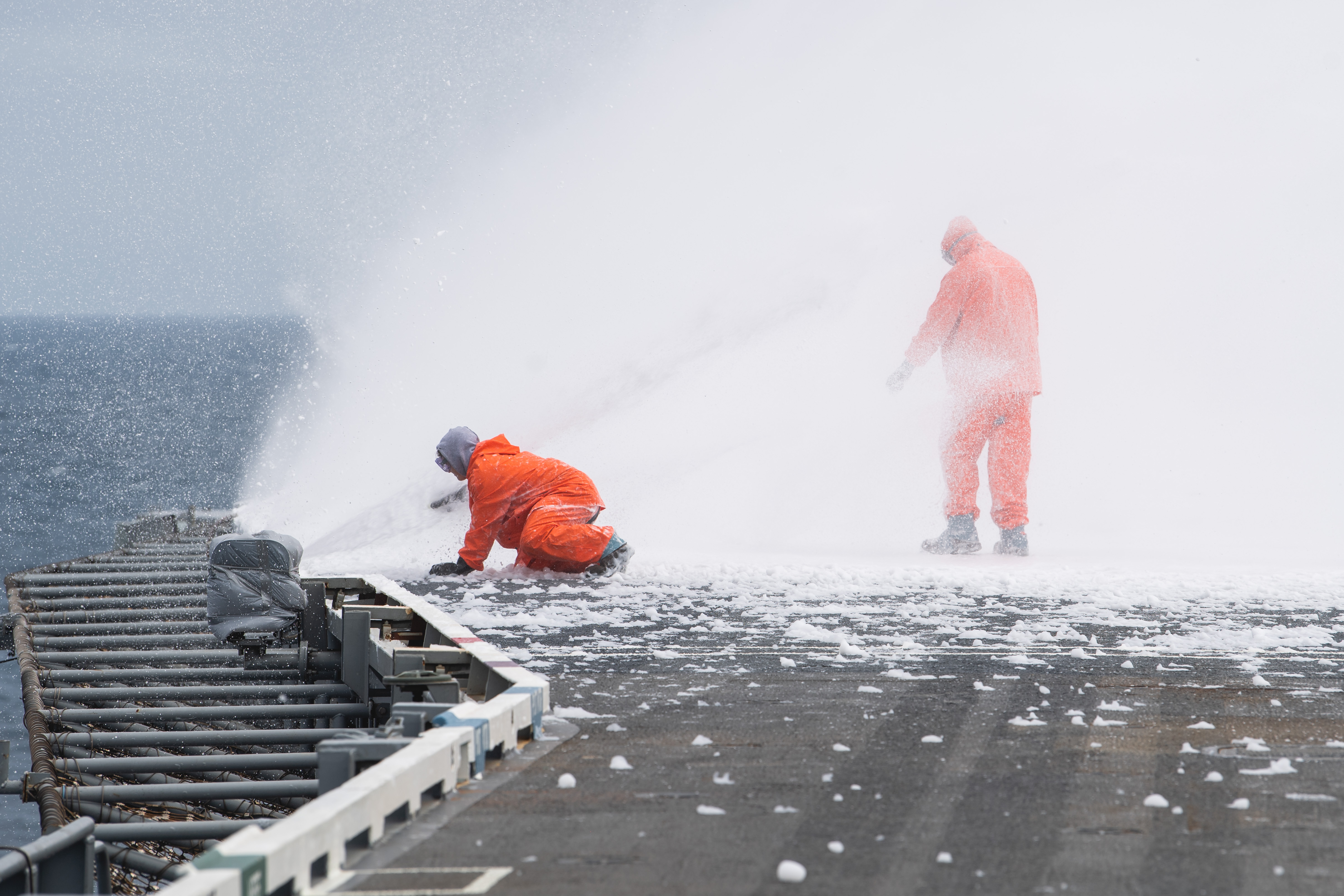When USS George Washington (CVN 73) left Newport News Shipbuilding last week, more than 300 NNS employees were on board. The shipbuilders worked – and lived – alongside the ship’s crew as the aircraft carrier took to the ocean for sea trials following its mid-life refueling and complex overhaul (RCOH).
The ship was put to the test during sea trials, and shipbuilders like Denise Sampson were on hand to help test systems and respond to any issues. The outside machinist – who was involved with testing such as high-speed turns – was participating in sea trials for the first time and said it was an honor to be part of the team.
“It’s kind of like I’m representing everybody who had a piece in building it. Out of all of the people, it’s like you’ve been chosen to hand this baby over,” she said. “It’s fulfilling to see all of your innovation, knowledge and efforts coming together to finally make something great.”
Pipefitter Eddie Mercado also was on CVN 73 sea trials. A longtime shipbuilder, Mercado was participating in sea trials for the fourth time.
“Sea trials are a lot of hard work,” he said. “They expect a lot from you, and you expect a lot from yourself. You have to make sure that you deliver what has to be done in a timely manner to keep the ship going through the testing process.”
Noah Pafford, an apprentice, was on sea trials for the first time and called it a privilege. He said the experience gave him a broader perspective of the importance of what he does every day. Sea trials also helps foster mutual respect between sailors and shipbuilders.
“Being able to stay on the boat with the sailors is kind of like the first time somebody invites you to their house,” he said. “It certainly made me feel like they have a degree of appreciation for what we do. It made it feel like much more of a team between us and them.”
Also on sea trials for the first time was mechanical engineer Dana Griffin, who was part of a troubleshooting and repair team.
“I was very happy to have an opportunity to finally see a lot of the equipment that I’ve worked on for several years actually come to life,” he said. “We spend so much of our time looking at a specific component in and of itself in the dry dock or at the berthing space, but until you actually see it in action, it’s hard to know how it interacts with other systems on the ship and how it plays a role in propelling the ship.”
Rufus Rhodes, a makeup supervisor working with a team of pumpers and cleaners, had a unique experience during sea trials when he was invited to the aircraft carrier’s bridge.
“I gave a command to have it go one-third in reverse,” Rhodes said. “I thought I would never get the opportunity to even step on the bridge. Actually seeing it all together after working so many years pumping it and cleaning it is so neat. I saw it from nothing – no paint, no insulation – to what it is now.”
Still in disbelief after the honor, Rhodes said he credits more experienced shipbuilders for passing along knowledge.
“If it wasn’t for those guys helping me, teaching me and making me a better person, I don’t think I would’ve been here right now,” he said. “It’s a team effort. The older generation has really taught me a lot. I hope one day, I will be able to do what the older guys did for me and pass on that knowledge.”

















